Expedition to the ancestors. The most ancient migrations

That's what they were like - ancient migrants. But, despite their wild appearance, they managed to populate the entire planet. And how did they succeed?
and breathed into his face the breath of life,
and man became a living soul.
Genesis 2:7
Migrants and migrations. Not long ago, while looking through materials on Zen, I came across an article about A. Svirin’s book “Expedition to the Ancestors.” And there its author writes: “Being an illustrator and book layout designer, I sometimes think - what would I consider a great creative success? What kind of book would I like to make?” And he himself answers this question that this is Svirin’s book, that he dreams of making the same one.
By the way, at the very beginning there was a very funny poem about our primitive ancestors, funny, but at the same time quite common sense. And although this book was written, in general, for children, it was interesting to read even for adults. And so I thought, what if we did something similar today, and again, it would be interesting for both children and adults?
This was the first idea, and the second, which came after it, concerned its actual content. So that she would be familiar in some ways, but not in others. It would also allow us to look at the well-known from a different angle, which is always instructive and contributes to the development of thinking. And finally, I managed to find such a topic.
And for a long time it was the case that human society, from ancient times, was viewed as rather static. It is clear that the point was that it was developing, but at the same time the role of ancient migrations was somehow not very clearly highlighted. Meanwhile, all story the human race is nothing more than one big and long journey! This is what the materials of this new cycle will tell you, dear VO readers.

A page from A. Svirin’s book. Foresight of J. Roney the Elder
Let's start with what we know about our ancestors today and what is this knowledge based on?
What we do know is that the remains of the oldest hominids, that is, apes, were found in Ethiopia in the Afar Valley (fragments of Ardipithecus ramidus), whose age is 4,5 million years. However, we are better aware of the later remains of the “southern apes” - australopithecus (Australopithecus afarensis). Their fossilized bones and footprints (3–4 million years old) indicate they had robust (if not complete) bipedalism, arms still adapted to climbing trees, and brains that was three times smaller than ours.
This species most likely gave birth to both the hefty australopithecus Australopithecus boisei*, Australopithecus aethiopicus**, Australopithecus robustus*** with their powerful teeth and plant diet, and representatives of our kind-tribe, i.e. people.
Sensational discoveries in the 1950s showed that all these closely related groups lived not only at the same time, but even in the same places. So J. Roney the Elder was blindsided when he described in his book “The Fight for Fire” people of different types - Ulamrs, “red dwarfs”, Kzams, “Va people” and “blue people”. As it turned out, that’s exactly what it was all about!
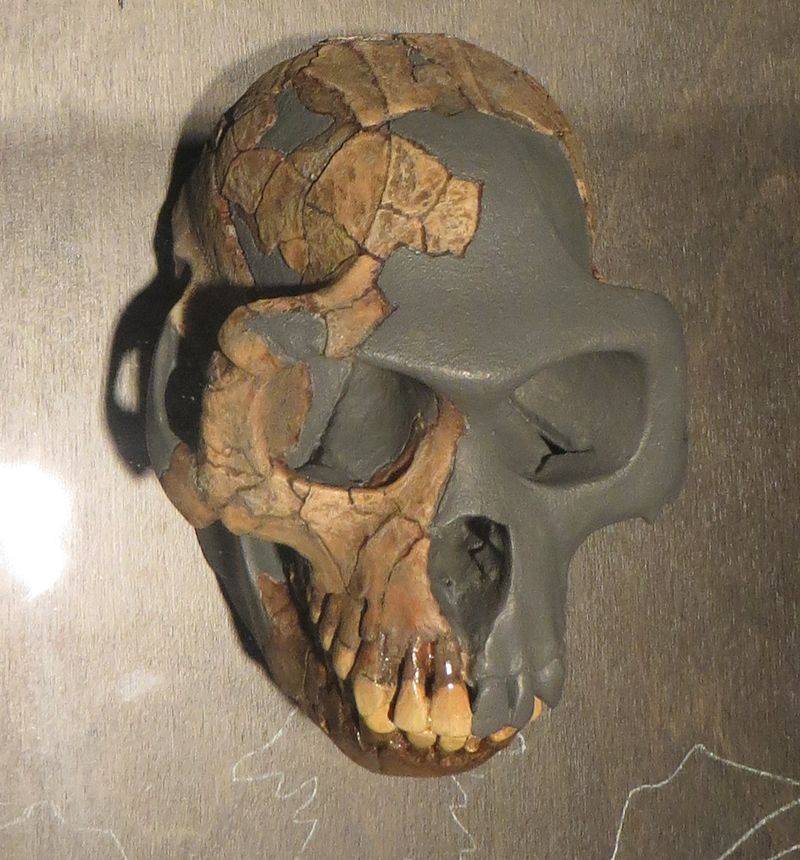
Skull of Ardipithecus ramidus from the Afar Valley. Royal Institute of Natural History, Brussels, Belgium
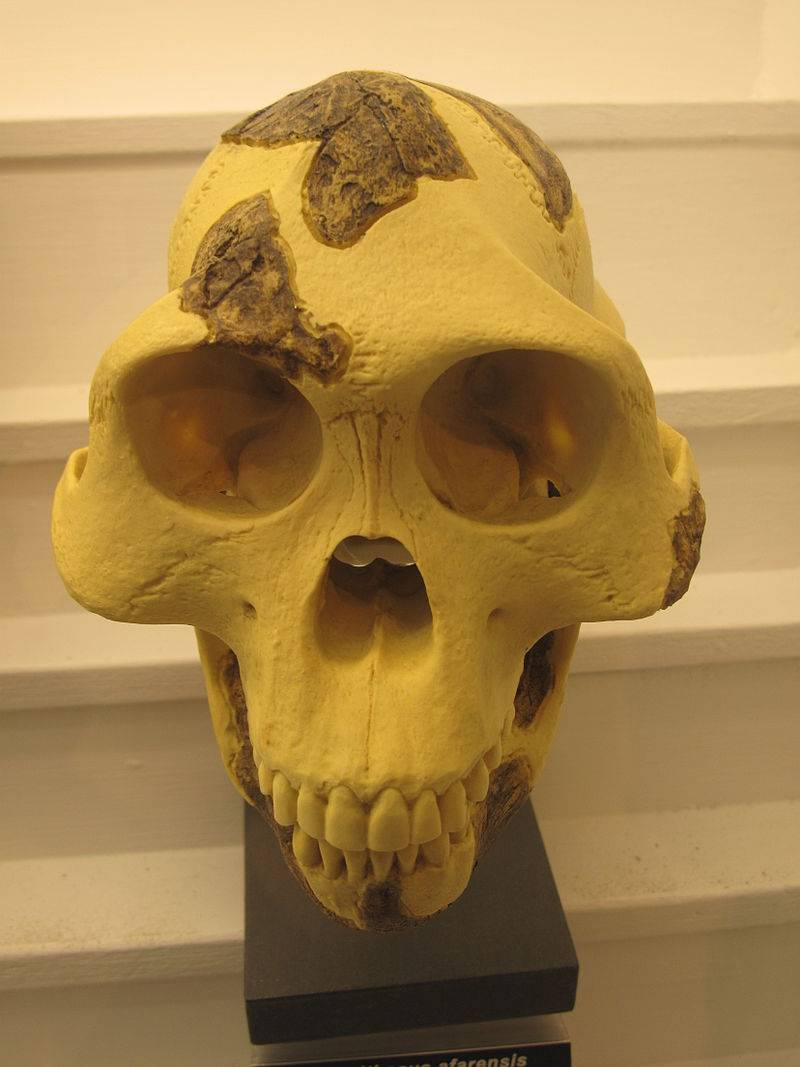
Australopithecus afarensis skull. Cantonal Museum of Geology in Lausanne
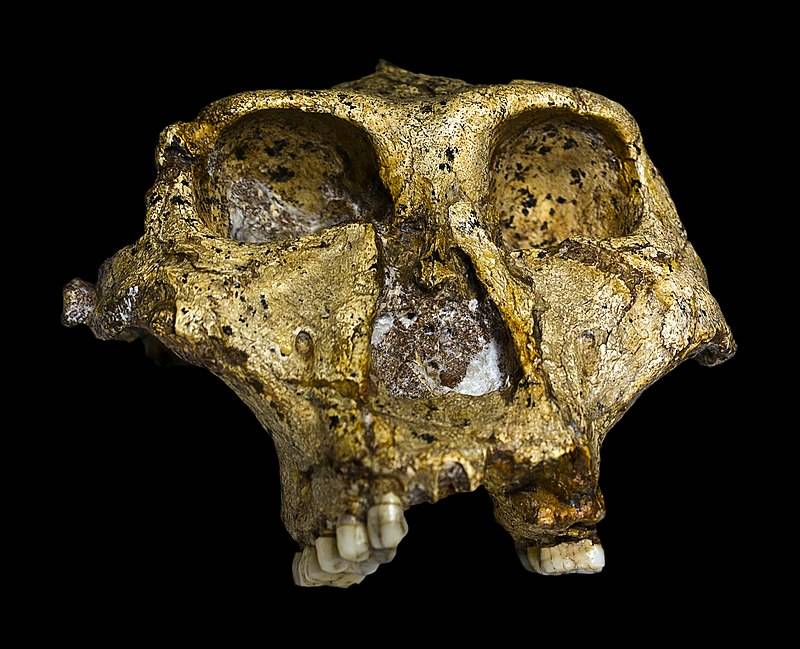
Bipedality and encephalization
About 2–3 million years ago, the first people noticeably advanced along the path of evolution: they became completely bipedal, the size of their brain (this is called encephalization) increased, and the structure of the jaw and larynx changed. But a large brain also needs a lot of energy, and therefore high-calorie food.
The problem was complicated by the fact that the size of their body remained almost unchanged, i.e. the stomach decreased in size relative to the brain. This meant that they now needed a new diet that provided more calories, and it turned out that they now began to require... a lot of meat!
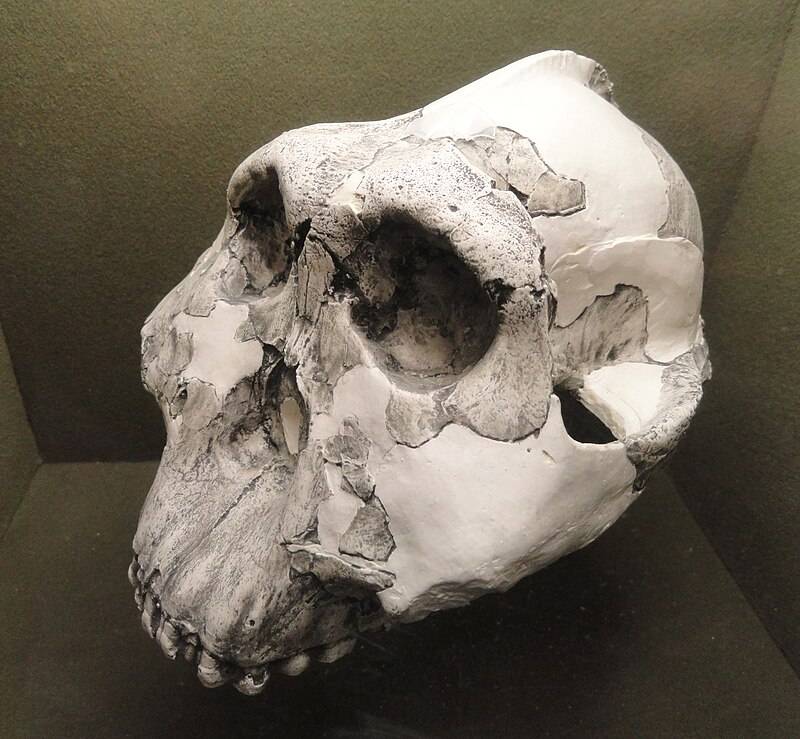
Skull of Australopithecus Beuys. Science Museum in Springfield, Massachusetts, USA
New diet and new technologies
Well, the transition to high-calorie and protein-rich animal food also required new tools, as evidenced by the oldest stone tools found in Gona (in Ethiopia). These were sharpened pieces of pebbles that these people used to cut animal carcasses and break their bones, extracting nutritious bone marrow, and with their help they also hunted and protected their prey from predators.
Burnt bones from South Africa clearly indicate that 1,5 million years ago our distant ancestors already knew how to cook their own food, for which they held it over the fire. This pre-processing of raw meat compensated for the reduction in the digestive tract and greatly facilitated its digestion.
When did people start leaving Africa?
All these achievements allowed Homo erectus to finally leave sub-Saharan Africa 1,8 million years ago. And 1 million years ago, Homo heidelbergensis (“Heidelberg Man”) had already migrated to the Middle East, that is, man began his triumphal march across the planet.
And this was just the beginning of the migrations of the human race-tribe!
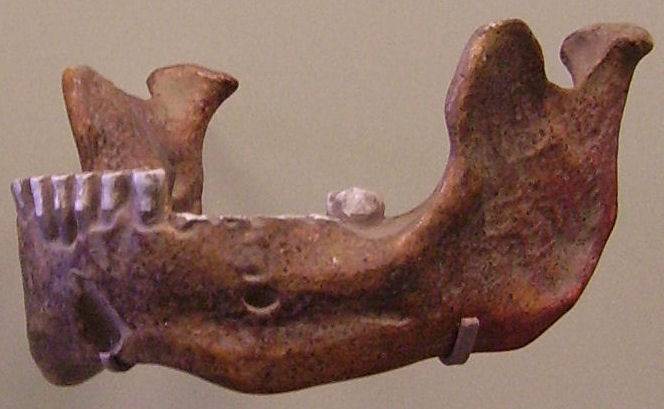
A lower jaw belonging to Heidelberg Man, found during excavations at Mauer. State Museum of Natural History Stuttgart
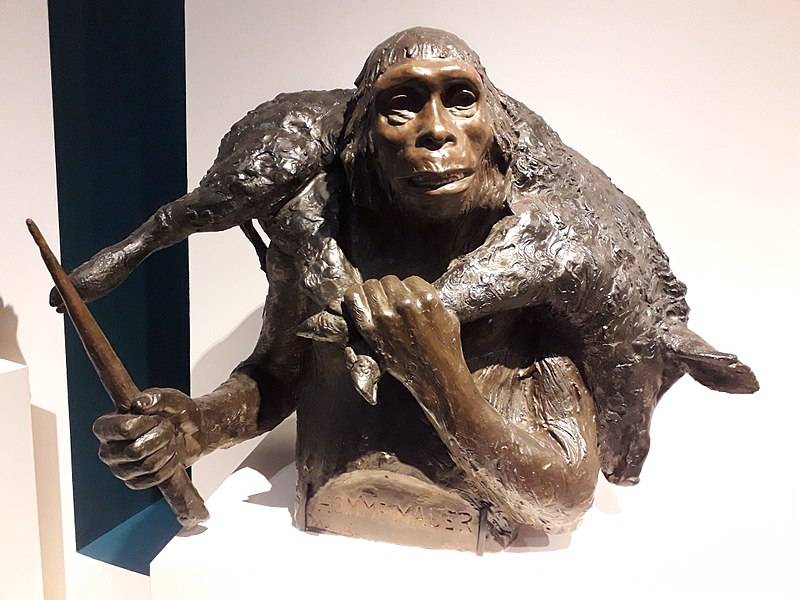
"Mauer's Man" with the corpse of a boar. Painted plaster bust. Louis Mascret and Aimé Ruto, 1909–1914 Royal Belgian Institute of Natural Sciences, Brussels. Filmed at the exhibition “Neanderthal. Exhibition" at the Museum of Man in Paris in April 2018.
Because even later, namely about 500 years ago, ancient people reached the north of Europe, as evidenced by fossil finds in Mauer, Steigheim, Bilzingsleben and other places. It is likely that the common ancestor of these human species was Homo habilis (Handy Man) or Homo ergaster (Working Man), best known from a skeleton found at Nariokotome in Kenya.
Moreover, all these finds indicate that about 1,5 million years ago, the volume of the human brain was about 1 cm3, and the stone axes of various shapes that they used were very effective cutting tools.
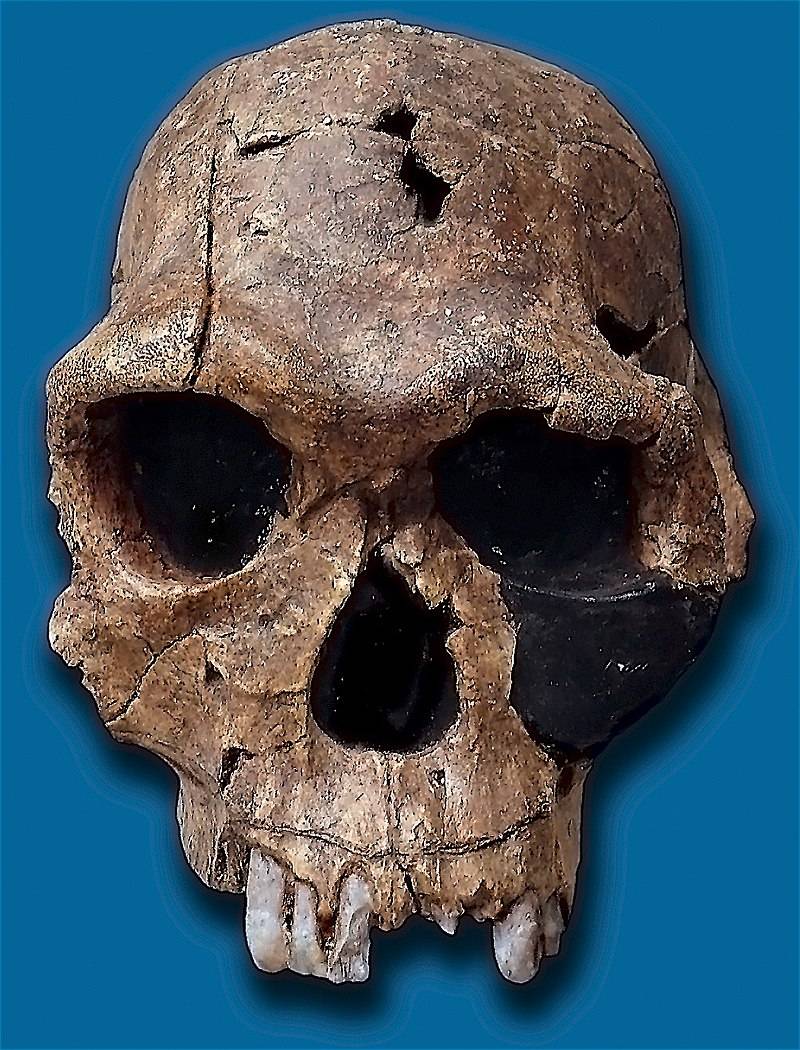
Skull of a “handy man.” It is believed that he was the ancestor of the “working man”...
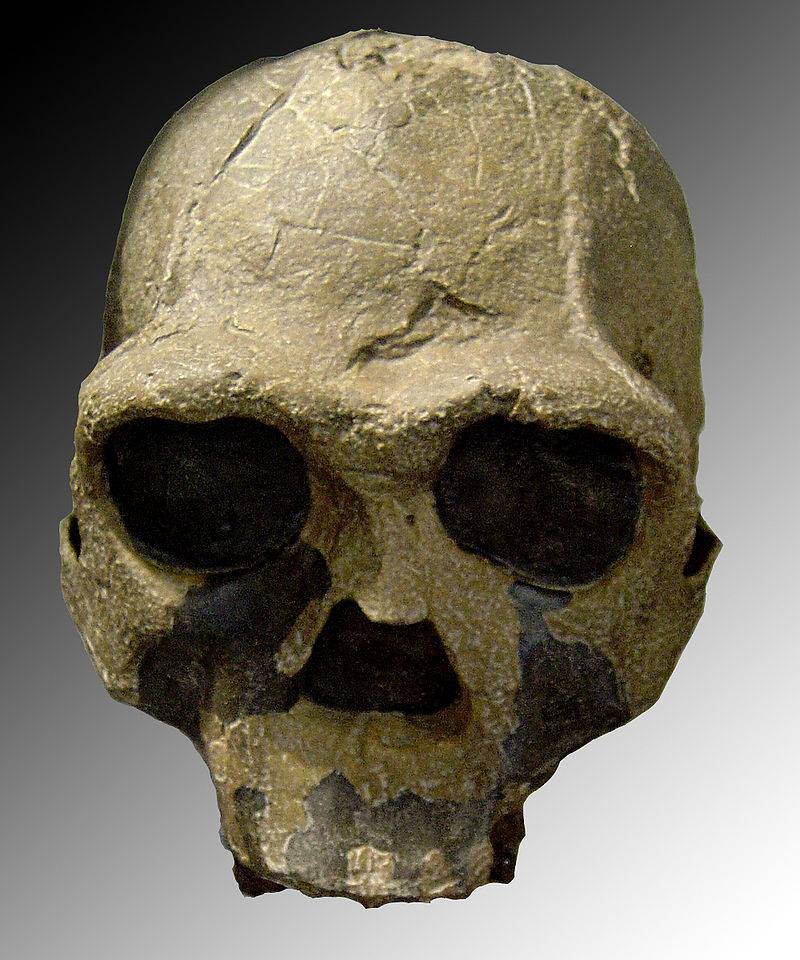
The skull of a “working man” from Koobi Fora (Kenya), found in 1973. The estimated age of the find is 1,9 million years, the volume of the skull is approximately 510 cm3
A long way from south to north...
The most interesting thing is that stone processing itself does not contribute to brain development. For example, australopithecines also had stone tools, but their skulls never grew, and they did not spread anywhere from Africa. Meanwhile, a large brain helped people not only better obtain food for themselves, but also improve relationships within their community.
The main paradox of all this was that, as they developed their social structure, they became less dependent on each other and were now able to live in smaller groups. And this allowed them to penetrate where there was little hunting prey, and, having thus overcome the Sahara, move further to the north, into the temperate climate zone.
At the same time, that is, about 500 years ago, the first stage of colonization of the world ended. Many populations of people arose who roamed and exchanged genes, but at the same time the formation of rather isolated regional groups (possibly separate species) such as the Neanderthals occurred.
Second wave
For a long time people have been exploring new territories. But about 100 years ago, the second wave of human settlement of the modern type, or neoanthrope (Homo sapiens sapiens), began.
Interestingly, the oldest skulls of modern humans, about 150 years old, were discovered in the Omo River basin in Ethiopia and in the lower reaches of the Klasies River in South Africa, that is, again, in Africa. It seems that 000 years ago neoanthropes began migrating north from Africa.
But then, after the first stage of migration, a so-called “bottleneck” followed, when population sizes remained miniscule for entire millennia. One of the reasons for this is believed to have been the eruption of Mount Toba in northwestern Sumatra 71 years ago. It was a real global catastrophe, because in India, for example, after this eruption the layer of ash reached three meters thick. Well, on the entire planet this led to centuries-long cooling.
However, a side effect of the decline in human numbers was genetic drift, which contributed to rapid evolutionary changes. Genetic studies, as well as archaeological finds, indicate a second stage of neoanthropic expansion, which began 50 years ago.
Neoanthropes reached Australia 50 years ago by sea; 000 years ago they conquered the western part of Oceania; and 33 years ago they managed to penetrate even into America.
Craftsmanship and trade
The findings indicate the growth of people's skills and their mastery of new skills. A lighter and more efficient weapon, for example, long spears equipped with sharp stone tips. Man begins to produce fabrics, weave from wicker, and began to arrange parking lots more thoughtfully, constructing “warm” dwellings and underground storage rooms.
The volume of barter trade is increasing sharply. Thus, flint or obsidian, which previously did not move more than 80 km from the mining site, now began to be exchanged within a radius of hundreds of kilometers. That is, it was then, in that era far from us, that the real Great Migration of Peoples took place, but absolutely nothing remained of it in human memory.
Mitochondria in the teeth of skulls that have come down to us, and stone tools and ancient works of art - that’s probably all that allows us to judge that time and the ancient migrations of “Homo sapiens.”
However, these are not all the types (or subspecies) of people who met in that distant time from ours, and clearly not all the routes along which they then traveled. But more about that next time...
* Boyce's paranthropus is the most massive species of paranthropus, discovered in 1959 by Mary Leakey in the East African gorges of Olduvai, Koobi Fora, Lokalei and a number of other places.
** The Ethiopian paranthropus is a fossil species of the genus Paranthropus ("massive australopithecus") that lived in East Africa about 2,5 million years ago.
*** A species of fossil great ape discovered in South Africa in 1938 by South African doctor and paleontologist Robert Broome.
To be continued ...
Information